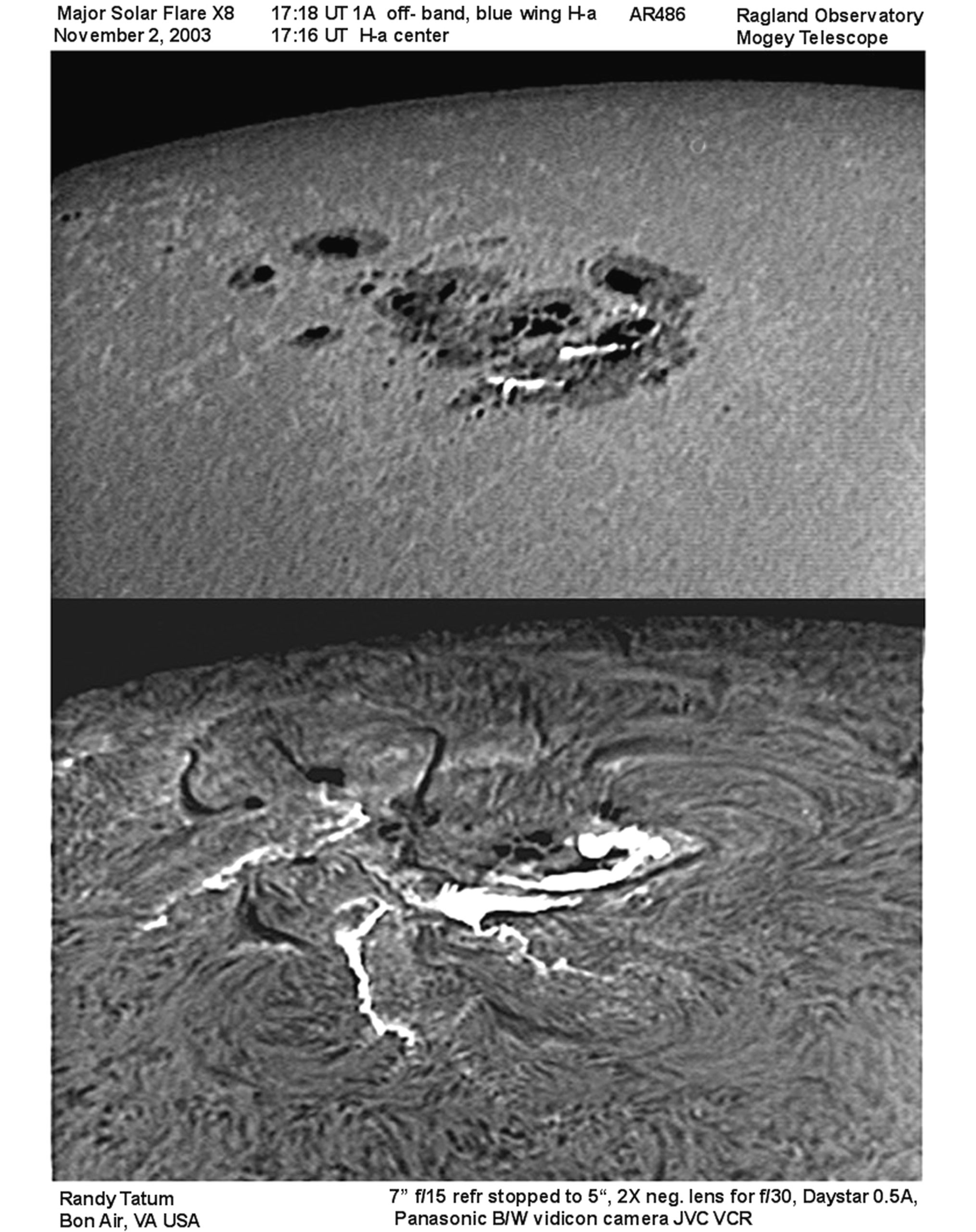Observations of a major solar flare, revisited
2023 December 12
Hydrogen-alpha observations of a major flare from 2003 November are revisited.
Introduction
2023 November marks the 20th anniversary of the historic solar Active Region (AR) 10486. AR 10486 produced several major flares, including an X17.2 flare on Oct 28, X10 on Oct 29, and the largest recorded X-class flare (X28+) on Nov 4.1 The latter event occurred on the Sun’s west limb, which made analysing this event difficult. Also, the flare intensity saturated the GOES satellite X-ray detectors. All major flares produced by this region created storms of high-energy protons, producing major geophysical effects.
This paper concerns observations of the X8.2 flare that occurred on 2003 Nov 2 (Figure 1).

Observations
The author was fortunate to be able to study and record the entire event, observing at Ragland Observatory, owned by the Richmond Astronomical Society located in Richmond, Virginia, USA. The primary instrument was a 7-inch ƒ/15 refractor with a vintage Mogey achromatic objective, stopped to 5 inches for hydrogen-alpha (Hα). The heavy and stable German equatorial mount allowed the attachment of filters and cameras to the focus. This instrument and the split-roof observatory were well suited for solar observations.
In order to utilise a larger aperture than with a 3.5-inch ƒ/30 pre-filter, a 2-inch ×2 negative lens with a coating that blocks ultraviolet was used. A Daystar 0.5-ångström (Å) Hα filter was used for filtration. The filter was installed in a tilt cell for rapid tuning. Tilting the narrowband interference filter shifted the bandpass to the blue wing of the Hα absorption line. Two model aeroplane servos were used to tilt the filter remotely, eliminating vibrations. The camera used was a heavy black-and-white Panasonic Vidicon camera, which had a large 2/3-inch tube. One had to be careful not to burn out the tube by exposing it to the unfiltered Sun.
The video was recorded with a JVC VHS VCR. WWV time signals were input to the audio track. All times given here are Universal Time. To keep from having to remove the camera to observe visually, a flip mirror with an eyepiece port was used. For image processing, a frame grabber, Presto VideoWorks, Registax 5 and Photoshop were used.
(Log in to view the full illustrated article in PDF format)
| The British Astronomical Association supports amateur astronomers around the UK and the rest of the world. Find out more about the BAA or join us. |
